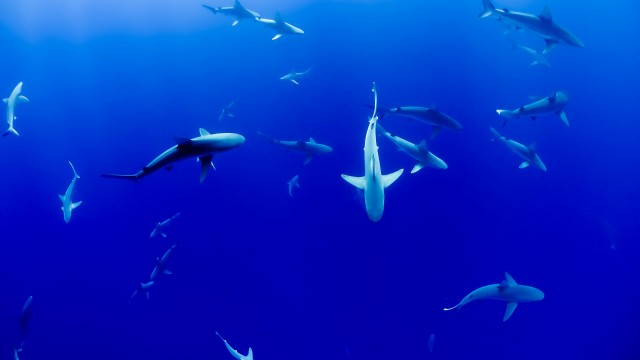Researching shark spines may lead to clues about human bone health
Shark spines — and their flexibility — may be able to tell us something about human bone diseases like osteoporosis.
July 30, 2019
It may be Shark Week, but that didn’t scare Northwestern Medicine scientist Stuart Stock away from researching the animal. Stock will be exploring the connection between shark and human spines at Argonne National Laboratory.
Sharks’ spines consistently flex and move as they swim. But even as their vertebrae bend frequently over their life spans, which can range from 30 years to multiple centuries, sharks never wear out their spines. Human bones are not able to bend that regularly, and as people age, their vertebrae also become more fragile.
This summer, Stock used the U.S. Department of Energy’s Advanced Photon Source (APS) at Argonne to research shark vertebrae and their strength, according to a Northwestern news release. As part of a collaboration with the Apex Predators Program, the research professor wants to understand how the animal’s tissue develops in support of its swimming style.
The APS is like a large X-ray, and can generate exponentially brighter images than the average machine found at a medical practitioner’s office. The focused X-rays can go through dense materials like bones and uncover molecular matter.
By using this high-resolution, 3D technology, Stock said he thought research about shark vertebrae could help people with degenerative bone diseases — ones that lack solid diagnosis and treatment methods. Specifically, he said he wants to explore the functionality of human bones.
“It’s the kind of thing as a scientist where you find there is an area open to discovery, one that might prove analogous to research in humans,” Stock told Northwestern Now.
Currently, diagnosis for osteoporosis, a bone disease that affects 1 in 3 women over the age of 50 and 1 in 5 men, can be inaccurate, Stock said. If doctors can understand the 3D arrangement in bone minerals, Stock said patients would be better served — even though the technique is still developing significantly.
Stock said he usually works on animal bones, which are similar to human ones but easier to obtain. To do so, Stock has used imaging throughout most of his career. He frequently works with X-ray scattering and tomography — a 3D imaging technique used to show a cross section of a solid object, often used on the human body in a CAT scan. Stock has been developing new techniques to study how components in bones respond to stress.
Though he is now using the APS technology to explore shark spines, the research professor has been using the imaging device for more than a decade. With it, Stock has even looked inside an Egyptian mummy without removing any wrappings.
Like with the ancient body he X-rayed two years ago, Stock hopes this summer’s research will reveal surprising and exciting answers.
“I have a feeling we are going to learn something very crucial about how bones and cartilage form,” he said. “I think it’s going to open a window into understanding what bones and cartilage do.”
Email: [email protected]
Twitter: @mar1ssamart1nez


